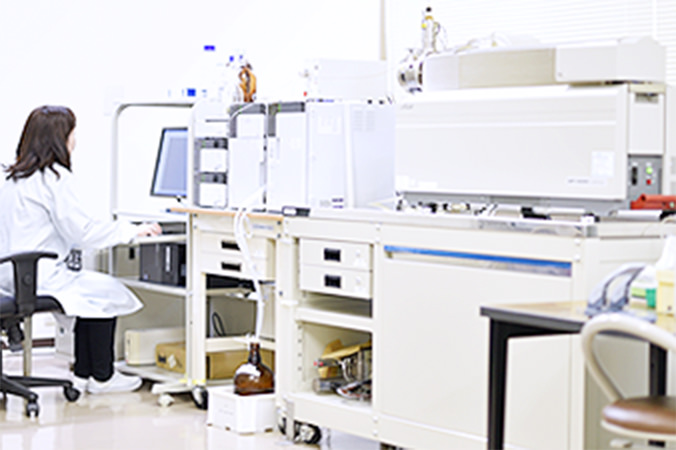Analysis

Metabolism & Chemical Analysis
INA offers analyses of test article and dosing formulations, as well as drug concentrations in biological samples. We also offer in vitro and in vivo analysis of hepatic drug-metabolizing enzymes and metabolizing enzyme gene expressions (mRNA).

Analyses of drug concentrations in biological samples (TK, PK)
■Development of new analytical methods
New analytical methods are developed by establishing the most favorable extraction method for the analysis of biological samples such as blood, urine, feces, and tissue homogenate (deproteinization, solid extraction or liquidliquid extraction). The optimal method to analyze the test article and its metabolites is then established, using either the preprocessing method, LC-MS/MS or HPLC systems.
■Validation of analytical methods
All validation studies are conducted in compliance with FDA guidance (Bioanalytical Method Validation, May 2001).
■Analyses of drug concentrations
Drug concentrations of a test article and its metabolites are measured in biological samples by safety (TK) and pharmacokinetic (PK) evaluations. Upon the provision of kits or antibodies, analysis can be carried out by immunoassay method. Incurred Sample Reanalysis (ISR) is also possible.
Analysis of the test article
■Validation of analytical methods
Validation studies (using HPLC, spectrophotometer, ELISA, etc.) to determine drug concentrations, stability, homogeneity and characterization, are carried out according to ICH and other regulatory guidance.
■Concentration verification, homogeneity, stability and characterization analyses
Drug concentration, stability and homogeneity of the dosing formulation is measured using HPLC, spectrophotometer, or ELISA kit. Characterization and stability assessment of the test article (the bulk substance and preparation) are carried out using HPLC, TLC, spectrophotometer, pH meter, K.F. moisture titrator or osmotic pressure measurements. All analyses are GLP compliant.
Metabolism studies
■in vivo / in vitro hepatic drug-metabolizing enzyme studies
- Protein content (mg/g liver)
- Cytochrome P450 content (nmol/mg protein)
- Ethoxyresorufin ο-deethylase activity (HPLC method, CYP molecular species: 1A)
- Testosterone 2α-, 6β-, 16α-, and 16β-hydroxylation activity (HPLC method, CYP molecular species: 3A, etc.)
- Dextromethorphan ο-methylation activity (HPLC method, CYP molecular species: 2D)
- Chlorozoxazone 6-hydroxylation activity (HPLC method, CYP molecular species: 2E)
■Screening toxicity using metabolizing enzyme gene probes (mRNA expression analysis)
- Phase I Response (CYP 1A1, 1A2, 3A8, 2D17, 2E1, CES1)
- Phase II Response (UGT1A01, UGT1A06, UGT1A08, UGT1A09, UGT2B18, UGT2B20, UGT2B30, HST, PST, GSTM1, GSTM2)
- Transporters (MDR1 (ABCB1), MRP1 (ABCC1), PEPT1(SLC15A1), OATP1B3 (SLC21A8))
- Housekeeping genes (β-actin, GAPDH, HPRT, B2M, PGK1)
- Other (GSS, CTH, albumin)
